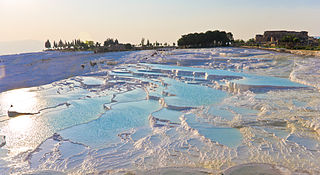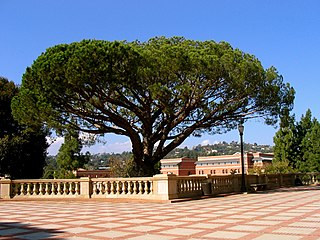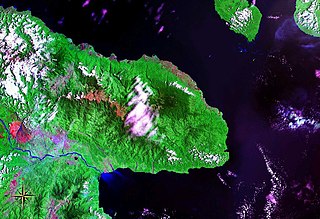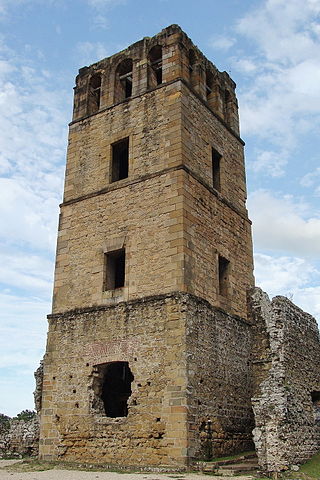Related Research Articles

Palau, officially the Republic of Palau and historically Belau, Palaos or Pelew, is an island country and microstate in the western Pacific. The nation has approximately 340 islands and connects the western chain of the Caroline Islands with parts of the Federated States of Micronesia. It has a total area of 466 square kilometers (180 sq mi). The most populous island is Koror, home to the country's most populous city of the same name. The capital Ngerulmud is located on the nearby island of Babeldaob, in Melekeok State. Palau shares maritime boundaries with international waters to the north, the Federated States of Micronesia to the east, Indonesia to the south, and the Philippines to the northwest.

Babeldaob is the largest island in the island nation of the Republic of Palau. It is in the western Caroline Islands, and the second largest island in the Micronesia region of Oceania. Palau's capital, Ngerulmud, is located on Babeldaob, in Melekeok State.

Ngarchelong is a state in Palau. Ngarchelong is at the northernmost tip of the island of Babeldaob. Only the state of Kayangel is farther north.

Aimeliik is an administrative division of the island country of Palau. It is one of the Republic of Palau's 16 states. It has an area of 52 km² and a population of 334. State capital is the village of Mongami. Following the four other villages which are: Medorm, Imul, Elechui and Ngmechiangel.

Pamukkale, meaning "cotton castle" in Turkish, is a natural site in Denizli Province in southwestern Turkey. The area is famous for a carbonate mineral left by the flowing of thermal spring water. It is located in Turkey's Inner Aegean region, in the River Menderes valley, which has a temperate climate for most of the year.

Mount Richard-Molard, also known as Mount Nimba, is a mountain along the border of Ivory Coast and Guinea in West Africa. The highest peak for both countries and the Nimba Range is at 1,752 m (5,748 ft). The mountain is a part of the Guinea Highlands, which straddles the borders between the two countries and Liberia. The nearest major settlements are the town Yekepa in Liberia and the towns of Bossou and N'Zoo in Guinea.

The Baháʼí Terraces, or the Hanging Gardens of Haifa, are garden terraces on Mount Carmel in Haifa, and one of the most popular tourist destinations in Israel. Completed in 2001, there are 19 terraces and more than 1,500 steps ascending the mountain. The central terrace has the Shrine of the Báb, one of the main religious figures of the Baháʼí Faith. The architect was Fariborz Sahba from Iran, and the structural engineers were Karban and Co. from Haifa.

Cultural landscape is a term used in the fields of geography, ecology, and heritage studies, to describe a symbiosis of human activity and environment. As defined by the World Heritage Committee, it is the "cultural properties [that] represent the combined works of nature and of man" and falls into three main categories:
- "a landscape designed and created intentionally by man"
- an "organically evolved landscape" which may be a "relict landscape" or a "continuing landscape"
- an "associative cultural landscape" which may be valued because of the "religious, artistic or cultural associations of the natural element."

The Rice Terraces of the Philippine Cordilleras are a World Heritage Site consisting of a complex of rice terraces on the island of Luzon in the Philippines. They were inscribed on the UNESCO World Heritage List in 1995, the first-ever property to be included in the cultural landscape category of the World Heritage List. This inscription has five sites: the Batad Rice Terraces and Bangaan Rice Terraces, Mayoyao Rice Terraces, Hungduan Rice Terraces and Nagacadan Rice Terraces, all in Ifugao Province, Philippines. The Ifugao Rice Terraces reach a higher altitude and were built on steeper slopes than many other terraces. The Ifugao complex of stone or mud walls and the careful carving of the natural contours of hills and mountains to make terraced pond fields, coupled with the development of intricate irrigation systems, harvesting water from the forests of the mountain tops, and an elaborate farming system.
Pinhay Bay is a bay in Devon, on the south coast of England, about 2 kilometres (1.2 mi) southwest of Lyme Regis and about 6 kilometres (3.7 mi) east of Seaton. The bay receives its name from the hamlet of Pinhay which is situated slightly inland.

A terrace is an external, raised, open, flat area in either a landscape near a building, or as a roof terrace on a flat roof.

Huon Peninsula is a large rugged peninsula on the island of New Guinea in Morobe Province, eastern Papua New Guinea. It is named after French explorer Jean-Michel Huon de Kermadec. The peninsula is dominated by the steep Saruwaged and Finisterre and Cromwell Mountains. The nearest large town is the Morobe provincial capital Lae to the south, while settlements on the north coast include the former German town of Finschhafen, the district capital of Wasu, Malalamai and Saidor with its World War II era Saidor Airport.

Panamá Viejo, also known as Panamá la Vieja, is the remaining part of the original Panama City, the former capital of Panama, which was destroyed in 1671 by the Welsh privateer Henry Morgan. It is located in the suburbs of the current capital. Together with the historical district of Panamá, it has been a World Heritage Site since 1997.
The Imeong Conservation Area is an area of roughly 1,250 sq m located in western Palau.

The International Centre for the Study of the Preservation and Restoration of Cultural Property (ICCROM) is an intergovernmental organization dedicated to the preservation of cultural heritage worldwide through training, information, research, cooperation and advocacy programmes. It aims to enhance the field of conservation-restoration and raise awareness to the importance and fragility of cultural heritage.

Ked Ra Ngchemiangel, also known as the Kamyangel Terraces, are a series of sculpted landforms in Aimeliik, a state on the island of Babeldaob, the largest in the island nation of Palau. Located near the Kamyangel River near its entry into Ngchemiangel Bay, the terraced hills are clearly manmade forms created in unknown antiquity, and are arrayed in a curve overlooking the bay. When viewed from head-on, many of these terraces have a stepped "crown and brim" appearance similar to that of a brimmed hat. One of the hills is terraced to a height of 190 feet (58 m).

London Road Gardens are one of the collection of New Town Gardens located close to the city centre of Edinburgh in the New Town, part of the UNESCO World Heritage Site inscribed in 1995. They occupy a long strip of land from east to west along the lower northern slope of Calton Hill, with an area of 4.37 hectares. The gardens are notable for their large, old trees including limes and some fine, surviving elms, also spring flowers, particularly daffodils.
References
- Ouballang ra Ngebedech (Ngebedech Terraces) - UNESCO World Heritage Centre Retrieved 2009-03-03.
- Morgan, W.N. (1988), Prehistoric Architecture in Micronesia, University of Texas Press. ISBN 0-292-76506-1